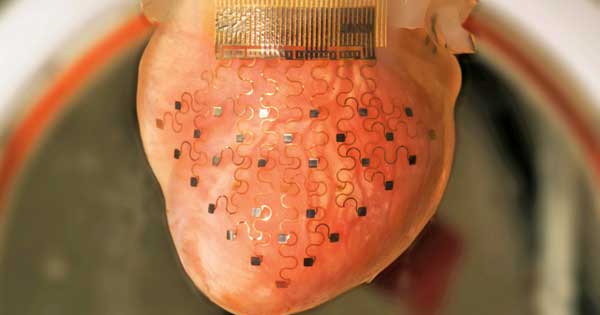
Pacemakers of the future will probably look very different from the rigid devices of today, thanks to John Rogers of the University of Illinois and Igor Efimov of Washington University, who have designed a flexible cardiac device that hugs the heart like a glove, stretching with each beat and delivering customized doses of electrical stimulation.
Made of a plastic called Echoflex and formed into a thin membrane not unlike the heart’s own pericardium, the pacemaker is embedded with a network of sensors and electrodes that monitor the organ’s activity and health, including pH levels and temperature; targeted defibrillation prevents cardiac arrest. Each is custom-made to fit a particular heart, based on exact measurements determined through medical imaging. Once a device is created, “you mount it on a heart the same way you would put a sock on your foot,” Efimov says.
Most traditional pacemakers are of limited longevity, but Rogers and Efimov’s invention is capable of being engineered to serve for a lifetime. But it also can be programmed to last just a couple of weeks and then be absorbed by the body—long enough to support a heart recovering from surgery, for example.
The prototype is powered by an external energy source, but the designers envision future examples powered by the hearts being served. Those pacemakers will harvest and employ energy from the beating and flexing of the heart itself.

